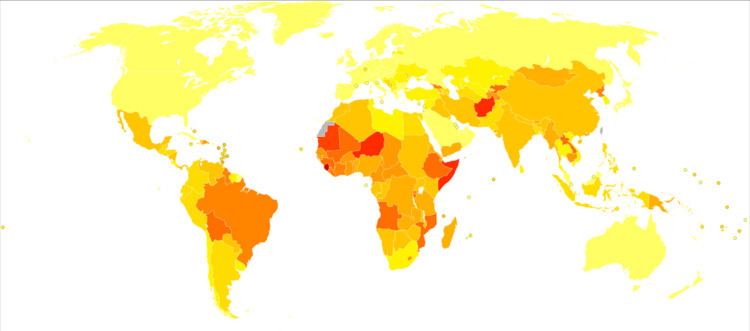Specialty pediatrics ICD-9-CM 768 eMedicine ped/149 | ICD-10 P21 DiseasesDB 1416 MeSH D001238 | |
 | ||
Perinatal asphyxia, neonatal asphyxia or birth asphyxia is the medical condition resulting from deprivation of oxygen to a newborn infant that lasts long enough during the birth process to cause physical harm, usually to the brain. Hypoxic damage can occur to most of the infant's organs (heart, lungs, liver, gut, kidneys), but brain damage is of most concern and perhaps the least likely to quickly or completely heal. In more pronounced cases, an infant will survive, but with damage to the brain manifested as either mental, such as developmental delay or intellectual disability, or physical, such as spasticity.
Contents
It results most commonly from a drop in maternal blood pressure or some other substantial interference with blood flow to the infant's brain during delivery. This can occur due to inadequate circulation or perfusion, impaired respiratory effort, or inadequate ventilation. Perinatal asphyxia happens in 2 to 10 per 1000 newborns that are born at term, and more for those that are born prematurely. WHO estimates that 4 million neonatal deaths occur yearly due to birth asphyxia, representing 38% of deaths of children under 5 years of age.
An infant suffering severe perinatal asphyxia usually has poor color (cyanosis), perfusion, responsiveness, muscle tone, and respiratory effort, as reflected in a low 5 minute Apgar score. Extreme degrees of asphyxia can cause cardiac arrest and death. If resuscitation is successful, the infant is usually transferred to a neonatal intensive care unit.
There has long been a scientific debate over whether newborn infants with asphyxia should be resuscitated with 100% oxygen or normal air. It has been demonstrated that high concentrations of oxygen lead to generation of oxygen free radicals, which have a role in reperfusion injury after asphyxia. Research by Ola Didrik Saugstad and others led to new international guidelines on newborn resuscitation in 2010, recommending the use of normal air instead of 100% oxygen.
There is considerable controversy over the diagnosis of birth asphyxia due to medicolegal reasons. Because of its lack of precision, the term is eschewed in modern obstetrics.
Risk Factors
Cause
Treatment
Epidemiology
A 2008 bulletin from the World Health Organization estimates that 900,000 total infants die each year from birth asphyxia, making it a leading cause of death for newborns.
In the United States, intrauterine hypoxia and birth asphyxia was listed as the tenth leading cause of neonatal death.
Medicolegal Aspects
There is current controversy regarding the medicolegal definitions and impacts of birth asphyxia. Plaintiff's attorneys often take the position that birth asphyxia is often preventable, and is often due to substandard care and human error. They have utilized some studies in their favor that have demonstrated that, "...although other potential causes exist, asphyxia and hypoxic-ischemic encephalopathy affect a substantial number of babies, and they are preventable causes of cerebral palsy." The American Congress of Obstetricians and Gynecologists disputes that conditions such as cerebral palsy are usually attributable to preventable causes, instead associating them with circumstances arising prior to birth and delivery.
